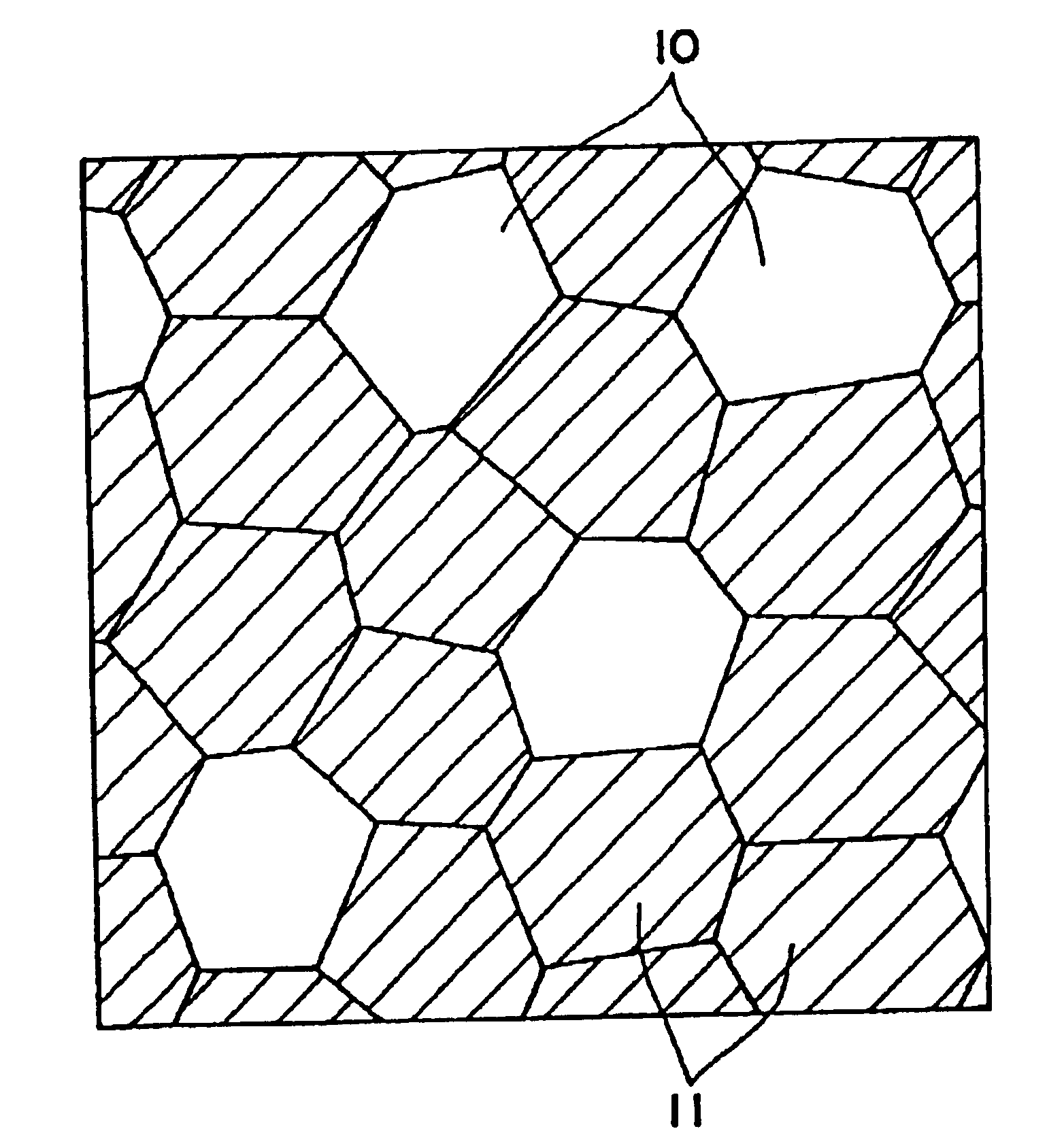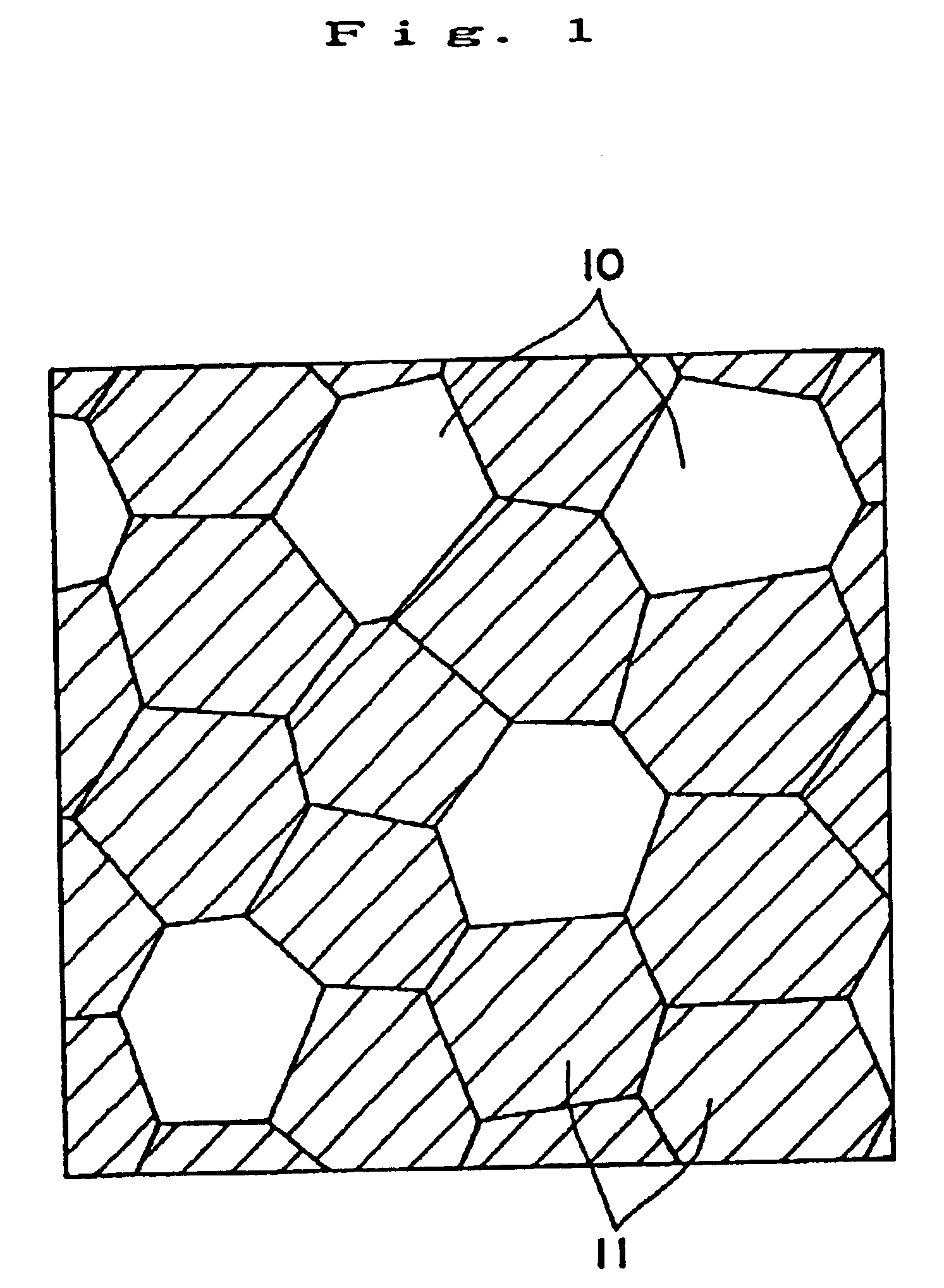Magnetic powder and isotropic bonded magnet
a technology of isotropic bonded magnets and magnetic powders, which is applied in the direction of magnetic materials, nanomagnetism, magnetic bodies, etc., can solve the problems of insufficient magnetic flux density of conventional isotropic bonded magnets, inability to achieve desired magnetic flux density, and increased content of magnetic powders to be contained in bonded magnets, etc., to achieve excellent magnetic properties, high maximum magnetic energy product (bh)max, and high magnetic properties
- Summary
- Abstract
- Description
- Claims
- Application Information
AI Technical Summary
Benefits of technology
Problems solved by technology
Method used
Image
Examples
example 1
Magnetic powders with alloy compositions (Nd0.7Pr0.25Dy0.05)8.5FebalCo7.0B5.3Alw (that is, various types of magnetic powders in which the content w of Al is changed variously) were obtained by the method described below.
First, each of the materials Nd, Pr, Dy, Fe, Co, B and Al was weighed, and then they-were cast to produce a mother alloy ingot, and a sample of about 15 g was cut out from the ingot.
A melt spinning apparatus 1 as shown in FIG. 4 and FIG. 5 was prepared, and the sample was placed in a quartz tube 2 having a nozzle 3 (circular orifice of which diameter is 0.6 mm) at the bottom. After evacuating the interior of a chamber in which the melt spinning apparatus 1 is housed, an inert gas (Ar gas) was introduced to obtain an atmosphere with desired temperature and pressure.
The cooling roll 5 of the melt spinning apparatus 1 is provided with a surface layer 52 on the outer periphery of the base part 51 made of Cu. The surface layer 52 is formed of ZrC and has a thickness of ab...
example 2
In the same manner as Example 1, magnetic powders with alloy compositions (Nd0.75Pr0.2Dy0.05)8.6FebalCo6.9B5.4Al1.0 were obtained by the method described below.
A composite (compound) for bonded magnet was prepared by mixing the respective magnetic powder with a polyamide resin (Nylon 12) and a small amount of hydrazine antioxidant and lubricant, and then kneading them under the temperature of 200-230° C. for 15 min. In this case, the content of the magnetic powder to be contained in each of the bonded magnets was variously changed to obtain seven types of compounds.
Among thus obtained compounds, the compounds having a relatively high content of the magnetic powder were crushed to be granular, and then they were subjected to a compaction molding (in the absence of a magnetic field), while the compounds having a relatively small content of the magnetic powder were crushed to be granular, and then they were subjected to an injection molding (in the absence of a magnetic field), thereby...
example 3
Using the magnetic powders obtained by Example 1, cylindrical (ring-shaped) isotropic bonded magnets having outer diameter of 22 mm, inner diameter of 20 mm and height of 4 mm were manufactured in the same manner as Example 1. Then, thus obtained bonded magnets were subjected to a multi-pole magnetization so as to have eight poles. At the magnetization process, an electric current of 16 kA was flowing through a magnetizing coil.
In this case, a magnitude of the magnetizing magnetic field for achieving 90% magnetizing ratio was relatively small, and this means that the magnetizability was excellent.
Further, using each bonded magnet as a magnet for a rotor, a spindle motor for CD-ROM drive was assembled. Then, each of the DC motors was rotated at 1000 rpm to measure a back electromotive force generated in the coil winding thereof. As a result, it has been confirmed that a voltage equal to or less than 0.80V can be obtained in the motors using the bonded magnets of the samples No. 1 and...
PUM
| Property | Measurement | Unit |
|---|---|---|
| particle size | aaaaa | aaaaa |
| particle diameter | aaaaa | aaaaa |
| velocity | aaaaa | aaaaa |
Abstract
Description
Claims
Application Information
 Login to View More
Login to View More - R&D
- Intellectual Property
- Life Sciences
- Materials
- Tech Scout
- Unparalleled Data Quality
- Higher Quality Content
- 60% Fewer Hallucinations
Browse by: Latest US Patents, China's latest patents, Technical Efficacy Thesaurus, Application Domain, Technology Topic, Popular Technical Reports.
© 2025 PatSnap. All rights reserved.Legal|Privacy policy|Modern Slavery Act Transparency Statement|Sitemap|About US| Contact US: help@patsnap.com



